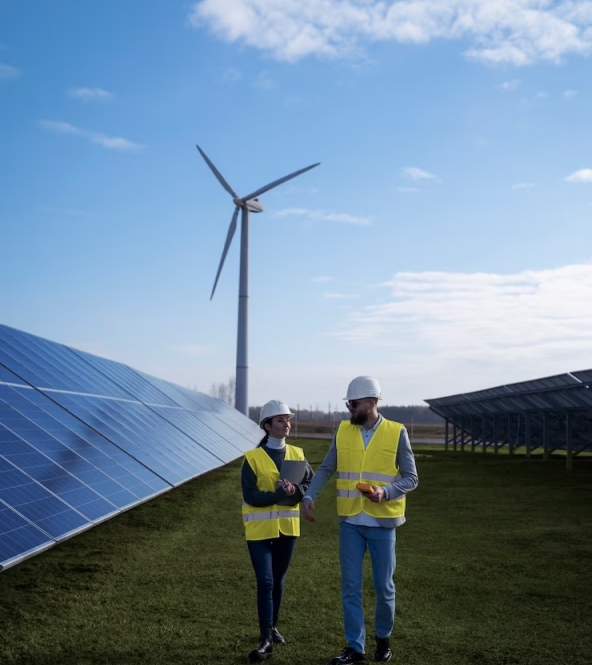Know the Importance of Solar Inverters & How Does It Works


A solar system has various parts like solar panels, solar inverters, and a rack to keep them. Depending on your solar system selection, it can also have batteries and an electric meter. After the solar panels, a solar inverter is the second most crucial part of the solar system.
Most people make the mistake of only focussing on the quality of solar panels while buying solar systems and ignoring the quality check of solar inverters. If you plan to install a solar system at your residential or commercial property, you must learn how a solar inverter works and why it is essential.
In this curated mini-guide, we have covered all the things you should know to become familiar with solar inverters.
What are solar inverters?
A solar inverter is a device in the solar systems that converts the energy (direct current) produced by the solar panels into the electricity (alternating current) we need to run our electrical appliances.
It helps monitor the system and provides analytical data, so we can ensure the proper functioning and detect maintenance issues on time.
You can also choose to connect the solar inverters with the central grid so both systems can work as one. If your solar system produces less power, the remaining can be balanced by the grid, and if your solar system is producing more power, you can sell it to the grid. This will keep your home or office running with a sufficient electricity supply and avoid the problem of voltage variations.
Now that we know what a solar inverter is, let’s understand how it works.
How does a solar inverter work?
The solar panels (also known as photovoltaic cells) absorb the sunlight and generate direct current. But your home and office require an alternating current to run the appliances and cannot function on the energy produced by solar panels.
The solar inverters act as a link between the solar panel and your home appliances. The inverter takes the current from the solar panel, converts it into alternating current, and sends it further to run your appliances. This is the working principle of solar inverters.
Types of solar inverters
There are mainly five types of solar inverters that you can look at when buying a solar system:
1. String Inverters
These are a very common option for the residential solar system as they connect several solar panels with a single inverter. They are one of the affordable options available in the market.
2. Microinverters
These are very small in size; the ratio of solar inverters to microinverters is 1:1. The most significant benefit you will get from using them is efficient power production because they optimize each solar panel individually, also known as power optimizer inverters.
3. Hybrid Inverters
Also named multi-mode inverters, they are not common in Australia. They enable you to connect batteries with your solar system and manage the batteries and solar panels together. This is called DC coupling, and the electronics manage the charging and discharging of the battery.
4. Battery Inverters
They are becoming a popular option day by day because they are easy to use and serve the purpose of an inverter and battery charger. Battery inverters can manage the power transfer between the grid and array while simultaneously charging the batteries. You can also monitor the battery’s charging status and control how the batteries should charge it.
5. Central Inverters
These inverters can manage solar systems which require hundreds of kilowatts or even megawatts of power. They look like cabinets that can handle around 500kW of power. Central inverters are used for commercial purposes or in utility-scale solar farms.
When choosing any solar inverter for your solar system, you should know how long it will last.
How long does a solar inverter last?
The lifespan of solar inverters depends on factors like heat, humidity, and regular maintenance. All these directly impact how efficiently and effectively your solar system will work.
Solar inverters have more sensitive components to heat than other parts, leading to equipment failure. The average lifespan of inverters is 10 to 15 years.
| Inverter Type |
Standard Warranties |
Extended Warranty |
| String Inverter |
5-10 |
20 |
| Micro-Inverter |
20-25 |
NA |
| DC Optimizers |
20-25 |
NA |
| Central Inverters |
5-10 |
20 |
| Battery Based Inverters |
2-5 |
10 |
The above mentioned are standard warranties for solar inverters and can vary depending on the brands you choose.
Summary
Now that you know how a solar inverter works and why it is essential, you can better decide to select your solar system and inverter.
Whenever installing the solar inverter, our team follows proper guidelines and measures to ensure that it gives you maximum output and efficiency.
Depending on your solar energy requirement, the type of solar inverter suitable for you will change. You can consult our specialists and understand what kind of solar inverter would suit your needs for a better understanding.




